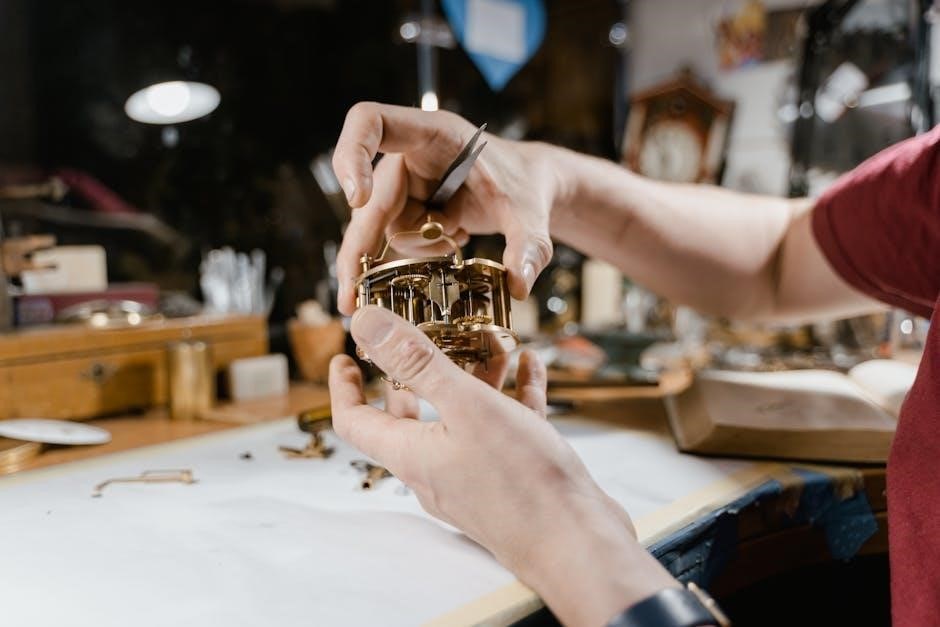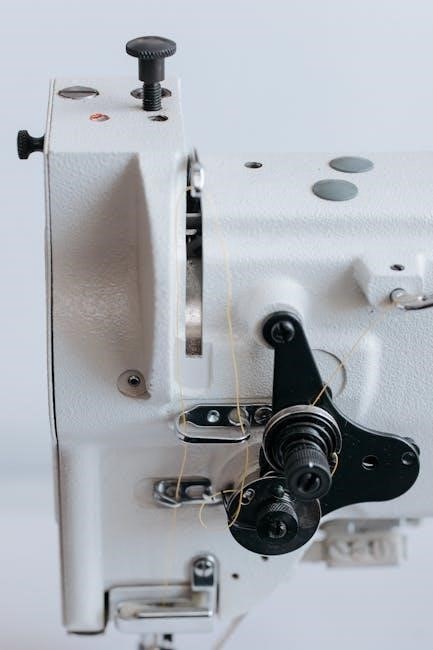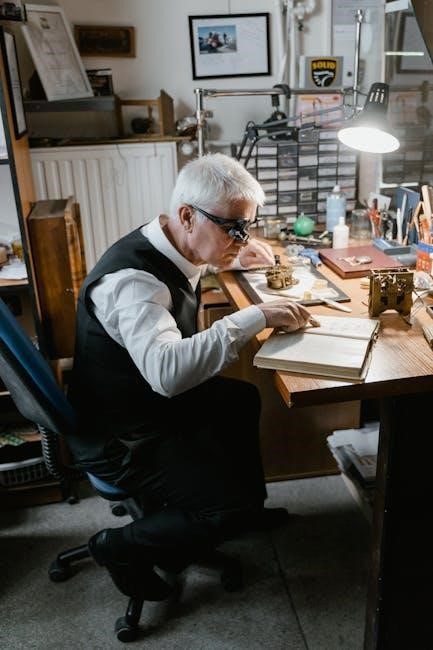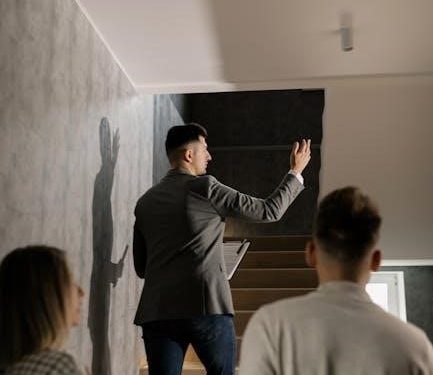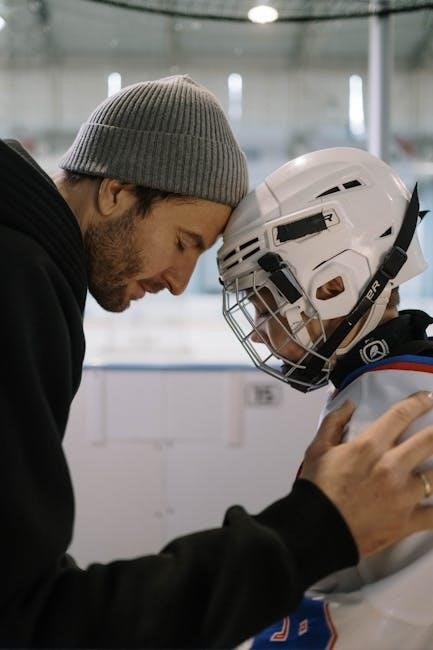The AAPC CPC exam is a crucial step for medical coders, offering resources like PDFs for practice, ensuring comprehensive preparation for certification and career advancement.
What is the AAPC CPC Exam?
The AAPC Certified Professional Coder (CPC) exam is a rigorous, 100-question multiple-choice assessment designed to evaluate a coder’s expertise in medical coding. It covers CPT, ICD-10-CM, and HCPCS Level II coding systems, requiring precise knowledge of medical terminology, anatomy, and coding guidelines. The exam is timed at 4 hours and focuses on scenarios like surgical procedures, diagnostic services, and evaluation and management codes. Passing the CPC exam demonstrates proficiency in assigning accurate codes for medical services, a critical skill for healthcare professionals. Resources like AAPC CPC exam questions and answers PDFs are widely used to prepare, offering realistic practice and verified explanations to ensure readiness for the exam;
Importance of AAPC CPC Certification
Earning the AAPC CPC certification significantly enhances a medical coder’s career prospects and professional credibility. It validates expertise in assigning accurate medical codes, essential for healthcare reimbursement and data analysis. Certified coders often experience higher salaries and greater job opportunities compared to non-certified peers. The certification demonstrates a deep understanding of coding guidelines and adherence to industry standards, making professionals more valuable to employers. Additionally, it fosters professional growth and opens doors to specialized roles in medical coding. Utilizing resources like AAPC CPC exam questions and answers PDFs ensures thorough preparation, equipping coders with the knowledge needed to excel in their field and maintain up-to-date skills in an evolving healthcare landscape.
Overview of the Exam Structure
The AAPC CPC exam consists of 100 multiple-choice questions, requiring 4 hours to complete. It assesses knowledge across various coding systems, including CPT, ICD-10-CM, and HCPCS Level II. The exam is divided into sections covering medical terminology, anatomy, and specific coding guidelines. Each question presents a clinical scenario, testing the ability to assign accurate codes. Resources like AAPC CPC exam questions and answers PDFs mirror the exam format, helping candidates familiarize themselves with the structure and content. Proper time management and understanding of coding conventions are crucial for success, as incorrect answers can impact the final score. The exam’s design ensures it evaluates both theoretical knowledge and practical application, preparing coders for real-world challenges in medical billing and coding.

Understanding AAPC CPC Exam Questions
The AAPC CPC exam is a certification for medical coders, focusing on accurate coding skills. Resources like PDFs provide practice questions and answers, aiding exam preparation effectively.
Types of Questions on the CPC Exam
The CPC exam features multiple-choice questions designed to test coding knowledge and application. Questions cover various coding systems, including CPT, ICD-10-CM, and HCPCS Level II. Many questions present clinical scenarios or case studies, requiring coders to assign accurate codes based on provided information. Some questions focus on specific coding guidelines, such as modifiers or NCCI edits, while others assess knowledge of anatomy and medical terminology. The exam also includes questions on evaluation and management services, surgery, and diagnostic procedures. Additionally, there are questions that require understanding of coding conventions and compliance issues. The variety of question types ensures a comprehensive assessment of a coder’s skills and readiness for real-world challenges.
Exam Format and Timing
The AAPC CPC exam consists of 100 multiple-choice questions, and candidates are allotted 4 hours to complete it. The exam is proctored and requires the use of CPT, ICD-10-CM, and HCPCS Level II codebooks. Questions are designed to test practical coding skills, with many based on real-world scenarios. The passing score is 70%, meaning at least 70 correct answers are needed. Candidates are advised to manage their time effectively, as the 4-hour window includes reading questions, coding, and reviewing answers. No breaks are scheduled, so thorough preparation and time management are essential. The exam format ensures that coders demonstrate their ability to apply coding guidelines accurately and efficiently in a professional setting.
Key Topics Covered in the CPC Exam
The CPC exam covers a wide range of topics essential for medical coding professionals. Key areas include medical terminology, anatomy, and coding guidelines for CPT, ICD-10-CM, and HCPCS Level II codes. The exam emphasizes evaluation and management services, surgical coding, and modifiers. Candidates are also tested on their understanding of pathology, radiology, and laboratory procedures. Additionally, the exam includes questions on coding for medical conditions, such as diabetes, hypertension, and heart disease. The exam also covers guidelines for reporting multiple procedures and complex scenarios. A strong grasp of these topics is critical for success, as they form the foundation of professional coding practices and real-world applications in healthcare settings.

Preparing for the AAPC CPC Exam
Effective preparation involves using AAPC CPC exam questions and answers PDF, practice tests, and verified answers to master coding guidelines, medical terminology, and real-world scenarios for success.
Recommended Study Materials
Essential study materials for the AAPC CPC exam include official AAPC study guides, CPT, ICD-10-CM, and HCPCS codebooks, and practice exams with verified answers. The AAPC CPC exam questions and answers PDF is a valuable resource, offering real exam scenarios and explanations to enhance understanding. Additionally, online communities and forums provide insights and tips from certified professionals. Utilizing these resources ensures comprehensive preparation, covering all exam topics such as medical terminology, coding guidelines, and evaluation and management services. Regular practice with updated materials helps candidates familiarize themselves with the exam format and improve their coding accuracy and speed. These tools are indispensable for achieving success on the CPC exam.
Role of Practice Exams in Preparation
Practice exams play a pivotal role in preparing for the AAPC CPC exam, offering candidates a realistic simulation of test conditions. They help candidates familiarize themselves with the exam format, including question types and time constraints. Utilizing resources like the AAPC CPC exam questions and answers PDF allows learners to assess their knowledge and identify areas needing improvement. These practice exams often include verified answers and explanations, enabling candidates to understand their mistakes and refine their coding skills. Regularly taking practice exams builds confidence, improves time management, and enhances the ability to apply coding guidelines accurately. This targeted preparation is essential for achieving success on the actual CPC exam.
Utilizing AAPC CPC Exam Questions and Answers PDF
The AAPC CPC exam questions and answers PDF is an invaluable resource for exam preparation, providing comprehensive coverage of coding scenarios. These PDFs include verified answers and detailed explanations, helping candidates understand complex coding concepts. By practicing with real exam questions, candidates can familiarize themselves with the exam format and timing; The PDFs are accessible and convenient, allowing self-paced study. They cover a wide range of topics, including medical terminology, evaluation and management, and surgical procedures. Regular use of these materials enhances coding accuracy and time management skills. Candidates can identify knowledge gaps and focus on challenging areas, ensuring thorough preparation. This resource is essential for achieving success in the CPC exam and advancing a career in medical coding.

Free and Paid Resources for CPC Exam Prep
Free AAPC CPC exam questions and answers PDFs are available online, offering practice tests and study guides. Paid resources provide comprehensive materials, including expert explanations and updated content.
Free AAPC CPC Exam Questions and Answers PDF
Free AAPC CPC exam questions and answers PDFs are widely available online, providing candidates with accessible study materials. These resources include actual exam questions, correct answers, and detailed explanations, helping aspirants understand the exam format and challenging coding scenarios. Platforms like Docsity offer free downloads, enabling candidates to practice and review at their convenience. These PDFs cover various coding topics, such as CPT, ICD-10-CM, and HCPCS Level II, ensuring comprehensive preparation. While free resources are valuable, they should be supplemented with official study guides for in-depth knowledge. Utilizing these free materials can significantly enhance exam readiness and confidence.
Paid Resources for Comprehensive Preparation
Paid resources offer advanced tools for AAPC CPC exam preparation, including premium practice exams, detailed answer explanations, and updated coding guidelines. Platforms like Pass4Success provide verified exam questions with rationales, mimicking real test conditions. These resources often include full-length practice tests, timing simulators, and performance tracking. Additionally, official AAPC study guides, such as the CPC Exam Study Guide, provide in-depth insights and expert tips. While free materials are helpful, paid resources offer structured learning and enhanced support, ensuring candidates are thoroughly prepared for the exam’s challenges and complexities. Investing in these tools can significantly improve understanding and confidence, leading to better exam outcomes.

Strategies for Success

Effective strategies include consistent practice with updated PDFs, mastering coding guidelines, and managing time efficiently during exams. Reviewing complex scenarios ensures accuracy and boosts confidence for success.

Time Management During the Exam
Effective time management is critical for success in the AAPC CPC exam. Allocate 4 minutes per question to complete all 100 questions within the 4-hour timeframe. Skim through easier questions first, marking difficult ones for later review. This strategy ensures no time is wasted and allows for thorough consideration of complex scenarios. Practice exams and PDF resources help build familiarity with the format, enabling better pacing. Prioritize understanding over speed, as accuracy is key to achieving the 70% passing score. Managing stress and maintaining focus will contribute to efficient time usage and overall performance.
Understanding Coding Guidelines
Mastering coding guidelines is essential for success on the AAPC CPC exam. Official resources, such as the AAPC CPC exam PDF, provide detailed explanations of coding rules and conventions. Focus on understanding CPT, ICD-10-CM, and HCPCS Level II guidelines, as these are frequently tested. Practice questions often highlight common coding scenarios, such as modifier usage and code sequencing. Pay attention to instructions like “use additional” or “do not code separately.” Reviewing real-life examples from past exams helps clarify complex coding situations. Accurate coding requires applying guidelines consistently, ensuring compliance with industry standards. Regular practice with updated materials enhances your ability to interpret and apply these rules effectively during the exam. This skill is critical for achieving certification and professional competence.
Common Mistakes to Avoid
Common mistakes on the AAPC CPC exam include misapplying coding guidelines, such as incorrect modifier usage or neglecting to code secondary diagnoses. Many candidates rush through questions, leading to oversights in complex scenarios. A frequent error is selecting the closest code without verifying specificity. Additionally, some coders fail to account for bundling rules or ignore “do not code separately” instructions. Time management is another pitfall; spending too long on one question can leave insufficient time for others. To avoid these errors, practice with real exam questions and focus on understanding coding conventions. Reviewing explanations in PDF resources helps identify and correct these mistakes, ensuring accurate and efficient coding during the exam. Avoiding these errors is crucial for achieving a passing score and maintaining coding integrity.

Importance of Verified Answers
The importance of verified answers lies in ensuring accuracy and compliance with coding guidelines, crucial for passing the AAPC CPC exam and avoiding costly errors.
How to Verify Answers for Accuracy
Verifying answers involves cross-referencing with official coding guidelines, such as CPT, ICD-10-CM, and HCPCS. Utilize AAPC CPC exam questions and answers PDFs to check correctness. Ensure each code aligns with documentation and guidelines. Review explanations provided for each question to understand rationale. Double-check modifier usage and sequencing. Consult updated codebooks annually. Participate in forums or study groups for peer review. Take practice exams to identify weak areas and confirm understanding. Use verified resources to ensure accuracy and avoid errors. Regularly update study materials to reflect current coding standards. This thorough approach enhances confidence and improves exam performance.
Impact of Incorrect Answers on Exam Results
Incorrect answers on the AAPC CPC exam can significantly lower your score, potentially leading to failure. Since the exam requires at least 70 correct answers out of 100, each mistake reduces your chances of passing. Misinterpreting coding guidelines or selecting wrong codes can result in lost points, especially in key areas like CPT, ICD-10-CM, and HCPCS. Additionally, incorrect modifier usage or sequencing errors can further impact your score. To mitigate this, use verified AAPC CPC exam questions and answers PDFs to identify weak areas and improve accuracy. Understanding the rationale behind each correct answer is crucial for avoiding future mistakes and achieving success. Regular practice and adherence to updated coding guidelines are essential for minimizing errors and ensuring exam success.

Real-Life Examples and Case Studies
Real-life examples, such as coding for a laminectomy or diagnostic laparoscopy, provide practical insights into AAPC CPC exam scenarios, helping candidates apply coding guidelines accurately.
Sample Questions from Past Exams
Sample questions from past AAPC CPC exams provide valuable insights into the exam format and content. These questions cover a wide range of topics, including medical terminology, CPT, ICD-10-CM, and HCPCS coding. For example, a question might ask about the appropriate code for a diagnostic laparoscopy or the use of modifiers like 25. Each question includes multiple-choice answers and detailed explanations to help candidates understand the reasoning behind the correct choice. Practicing with these sample questions helps candidates familiarize themselves with the exam structure and identify areas for improvement. They also serve as a tool to refine coding skills and ensure accuracy in real-world scenarios. Regular practice with these questions is essential for achieving success on the AAPC CPC exam.
Explanations for Complex Scenarios
Explanations for complex scenarios in the AAPC CPC exam questions and answers PDF provide detailed insights into challenging coding cases. These explanations break down intricate medical scenarios, such as coding for conditions like diabetes with complications or surgical procedures requiring multiple codes. They highlight key coding guidelines, modifier usage, and documentation requirements. For example, explanations clarify when to use modifiers like 25 or 59 and how to sequence codes for conditions like hypertension with heart failure. These resources are invaluable for understanding the rationale behind correct answers, helping coders improve their accuracy and confidence. The explanations are often included in PDF study materials, making them easily accessible for review and practice.

Staying Updated with the Latest Resources
Access the latest AAPC CPC exam questions and answers PDF, updated annually, to stay current with coding guidelines and ensure effective exam preparation and success.
Annual Updates to the CPC Exam
The AAPC CPC exam undergoes annual updates to reflect changes in medical coding guidelines, ensuring exam questions remain relevant and aligned with current industry standards. These updates include new codes, revised guidelines, and emerging medical practices. Candidates must stay informed about these changes to maintain accuracy in their preparation. The AAPC releases updated study materials, including CPC exam questions and answers PDF, to help candidates adapt to the latest coding practices. Regularly reviewing these resources is essential for success, as outdated knowledge can lead to incorrect answers and lower scores. Staying updated ensures that candidates are well-prepared for the evolving demands of the medical coding field.
Downloading the Latest AAPC CPC Exam PDF
Downloading the latest AAPC CPC exam PDF is essential for effective preparation, as it provides access to updated questions and answers reflecting current coding standards. Platforms like Docsity offer downloadable resources, including real exam questions and verified answers, ensuring candidates are well-prepared. These PDFs often include explanations for complex scenarios, helping coders understand the rationale behind correct answers. Regularly updating your study materials ensures alignment with annual coding guideline changes. By leveraging these resources, candidates can enhance their knowledge and improve their chances of passing the exam. Always verify the source and date of the PDF to ensure it contains the most recent information.
Utilizing AAPC CPC exam questions and answers PDF ensures comprehensive preparation, helping candidates master coding guidelines and pass the exam with confidence.
Final Tips for Exam Success
To excel in the AAPC CPC exam, focus on consistent practice with real exam questions and verified answers. Allocate time wisely during the test, ensuring each question is thoroughly reviewed. Mastering coding guidelines and understanding complex scenarios will enhance accuracy. Utilize study guides and practice exams to identify weak areas and strengthen your knowledge base. Stay updated with the latest coding resources and guidelines to ensure readiness. Avoid common mistakes by carefully reading each question and its options. Building confidence through practice and understanding will lead to success. Remember, preparation is key to achieving your certification and advancing your career in medical coding.
Benefits of Passing the CPC Exam
Passing the AAPC CPC exam opens doors to enhanced career opportunities in medical coding. It significantly boosts your credibility as a professional coder, making you a valuable asset to healthcare organizations. The certification demonstrates expertise in coding guidelines, CPT, ICD-10, and HCPCS, which is highly sought after by employers. Additionally, CPC certification often leads to higher salary potential and career advancement. It also provides a strong foundation for specializing in various coding areas, such as surgical or diagnostic procedures. By achieving this certification, you gain the confidence and skills needed to excel in the competitive healthcare industry. Invest in your future with the AAPC CPC certification and unlock endless professional growth opportunities.












